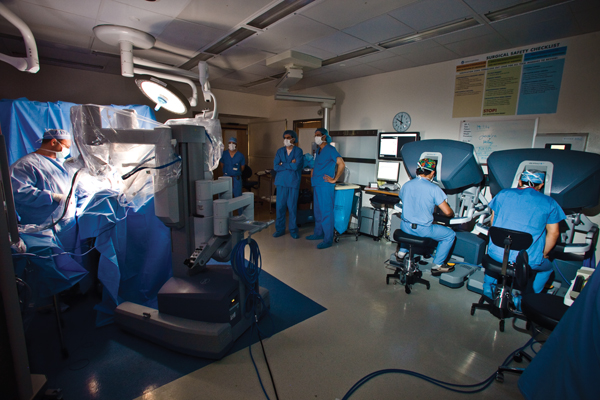Rewriting Life
Robot in the OR
The da Vinci robot can shorten surgical recovery times.

Over the last decade, the da Vinci robot, developed by California-based Intuitive Surgical, has appeared in hundreds of operating rooms around the world. It offers a new approach to laparoscopic procedures, which involve threading surgical tools through small holes in the body rather than making large incisions. Traditional laparoscopy uses tools with limited movement and offers surgeons a flat, 2-D view, but the $2.5 million da Vinci has a sophisticated imaging system and incorporates more flexible tools.
In an operating room at Children’s Hospital Boston, surgeons use the robot to repair a three-year-old patient’s bladder. The surgeons sit across the room from the patient, manipulating surgical tools through a console.
In an operating room at Children’s Hospital Boston, surgeons use the robot to repair a three-year-old patient’s bladder. The surgeons sit across the room from the patient, manipulating surgical tools through a console.
